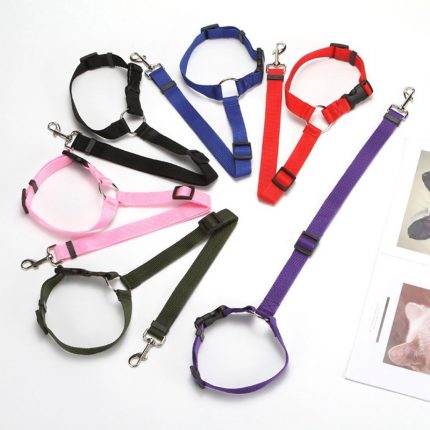Why Does My Dog Knead His Blanket?
Have you ever wondered why your furry friend engages in the peculiar behavior of kneading their blanket? If you’ve observed your dog rhythmically pushing and pawing at their bedding, you’re not alone. This intriguing behavior is not limited to cats; dogs also exhibit this instinctive action. While it may seem strange, there are several reasons why dogs knead their blankets, and understanding these motives can provide valuable insights into their behavior and emotional well-being.
One possible explanation for this behavior is rooted in a dog’s ancestral instincts. Dogs are descendants of wolves, and just like their wild counterparts, they have an innate need to create a comfortable and secure sleeping area. Kneading, also known as “making a nest,” mimics the actions wolves take to prepare their sleeping quarters in the wild. By kneading their blankets, dogs are instinctively trying to create a cozy and safe space for themselves.
Another reason for this behavior is related to a dog’s natural instinct to mark their territory. Dogs have scent glands in their paws, and when they knead their blankets, they leave behind their unique scent. This territorial marking behavior helps dogs establish a sense of ownership and security over their sleeping area. So, when your dog kneads their blanket, they are essentially “claiming” it as their own.

Furthermore, kneading can also be a self-soothing mechanism for dogs. Similar to how humans engage in activities like knitting or squeezing stress balls to relax, dogs find comfort in repetitive actions like kneading. This behavior releases endorphins, which are natural feel-good hormones, providing dogs with a sense of calm and contentment. So, if your dog kneads their blanket before settling down for a nap, it could be their way of destressing and preparing for a restful sleep.
It’s important to note that not all dogs knead their blankets, and the frequency and intensity of this behavior can vary among individuals. Factors such as breed, age, and personality traits can influence a dog’s inclination to knead. Additionally, dogs may also knead other soft surfaces like pillows, cushions, or even your lap. Understanding why your dog engages in this behavior can strengthen the bond between you and your furry companion.
In the following sections, we will delve deeper into the reasons behind this behavior and explore practical recommendations to address any concerns or issues related to your dog’s kneading habits. By gaining a better understanding of why dogs knead their blankets, we can ensure their well-being and provide them with the care and comfort they deserve.
The Reasons Behind Your Dog’s Kneading Behavior
1. Instinctual Behavior
One of the primary reasons why dogs knead their blankets is rooted in their instinctual behavior. As descendants of wolves, dogs have inherited certain behaviors from their wild ancestors. Wolves in the wild engage in kneading actions to create a comfortable and secure sleeping area. By kneading their blankets, dogs are essentially trying to recreate this natural nesting behavior. It is their way of preparing a cozy spot where they can relax and feel safe.
2. Territorial Marking
Another key reason for your dog’s kneading behavior is their instinct to mark their territory. Dogs have scent glands in their paws, and when they knead their blankets, they leave behind their unique scent. This territorial marking behavior helps dogs establish a sense of ownership and security over their sleeping area. By kneading, they are essentially claiming their blanket as their own and signaling to other animals that this space belongs to them.
3. Self-Soothing and Comfort
Kneading can also serve as a self-soothing mechanism for dogs. Similar to how humans engage in activities like knitting or squeezing stress balls to relax, dogs find comfort in repetitive actions like kneading. This behavior releases endorphins, which are natural feel-good hormones, providing dogs with a sense of calm and contentment. So, when your dog kneads their blanket, it could be their way of destressing and preparing for a restful sleep.

4. Nurturing Instincts
In some cases, dogs may knead their blankets as a display of their nurturing instincts. This behavior is more commonly observed in female dogs who have recently given birth or are experiencing a false pregnancy. Kneading mimics the actions a mother dog takes to stimulate milk production and create a comfortable nesting area for her puppies. So, if your female dog kneads her blanket, it could be a sign that she is experiencing maternal instincts, even if she hasn’t had any puppies.
5. Habit or Learned Behavior
For some dogs, kneading may simply be a habit or learned behavior. If a dog receives positive reinforcement or attention when they knead, they may continue to engage in this behavior. Similarly, if they observe other dogs or animals kneading, they may imitate the action. In such cases, kneading becomes a learned behavior rather than an instinctual one.
Conclusion
In conclusion, understanding the curious behavior of your dog, such as “Why Does My Dog Knead His Blanket,” can significantly enhance your relationship with your furry friend by providing insights into their comfort and stress-relieving habits. For a deeper dive into the fascinating behaviors of dogs, including kneading and other common habits, visit geepets.com. This site offers a wealth of information on canine behavior, health tips, and how to foster a loving environment for your pet.
Additionally, for further reading on the topic and to explore a broad range of articles on dog care and behavior, The American Kennel Club is an invaluable external resource. Both of these resources can equip you with the knowledge and understanding necessary to nurture a healthy, happy relationship with your dog.
Practical Recommendations for Addressing Your Dog’s Kneading Behavior
1. Provide Adequate Bedding Options
To satisfy your dog’s natural nesting instincts and address the question of “Why Does My Dog Knead His Blanket,” ensure they have access to comfortable and appropriate bedding options. Offering them a variety of blankets, pillows, or dog beds to choose from will not only give them the opportunity to find their preferred sleeping surface but also help reduce the need to knead excessively, which is often a behavior stemming from the question many pet owners find themselves asking: “Why Does My Dog Knead His Blanket?”
This behavior is a part of their instinct to create a comfortable sleeping area, which is why providing multiple options can be so beneficial. By addressing the root cause behind “Why Does My Dog Knead His Blanket,” you’re directly responding to their natural desires for comfort and security, thereby possibly reducing the frequency of this behavior.
2. Regular Exercise and Mental Stimulation
Engaging your dog in regular exercise and providing mental stimulation can help alleviate any excess energy or anxiety that may contribute to the question, “Why does my dog knead his blanket?” Take your dog for daily walks, play interactive games, and provide puzzle toys or treat-dispensing toys to keep their mind occupied.
If you’re pondering over “Why does my dog knead his blanket?”, it’s essential to understand that a tired and mentally stimulated dog is less likely to engage in excessive kneading behaviors. Incorporating these activities into your dog’s routine can address the underlying causes of why your dog might be showing such behaviors. A well-exercised and mentally engaged dog will have less need to seek comfort or release anxiety through kneading, thus providing an answer to the query, “Why does my dog knead his blanket?”
3. Create a Calm Environment
Ensuring your dog has a quiet and calm environment is crucial for their well-being, especially if you’re wondering, “Why does my dog knead his blanket?” Loud noises, disturbances, or stressful situations can trigger anxiety in your pet, leading to behaviors like excessive kneading. If you find yourself asking, “Why does my dog knead his blanket?” it’s important to consider the environment you’re providing for them. By minimizing these stressors and creating a designated, quiet space for your dog to retreat to, you can help reduce their need to knead as a self-soothing mechanism.
Providing such a space is especially vital if you frequently catch yourself thinking, “Why does my dog knead his blanket?” This behavior often indicates that they are seeking comfort and security. So, when the question “Why does my dog knead his blanket?” arises, remember that ensuring a peaceful environment can be a key factor in addressing this behavior, helping your dog feel more relaxed and secure without the need for constant kneading.
4. Positive Reinforcement
If you find yourself wondering, “Why does my dog knead his blanket?” and this behavior becomes problematic or disruptive, it’s important to address it with positive reinforcement techniques. Instead of scolding or punishing your dog for their answer to the question, “Why does my dog knead his blanket?”, redirect their behavior to more appropriate activities.

This approach ensures that the query, “Why does my dog knead his blanket?” doesn’t lead to negative interactions between you and your pet. Reward them with treats or praise when they engage in desired behaviors, such as lying down calmly on their blanket without excessive kneading. This strategy not only provides a solution to the question, “Why does my dog knead his blanket?” but also reinforces good behavior, making your dog less likely to resort to kneading as a form of comfort or stress relief.
5. Seek Professional Help if Necessary
If you’re wondering, “Why does my dog knead his blanket?” and this behavior is causing distress or if you have concerns about their well-being, it’s always advisable to consult with a professional, such as a veterinarian or a certified dog behaviorist. They can assess the underlying reasons for the behavior, such as exploring the question, “Why does my dog knead his blanket?” and provide tailored guidance and training techniques to address the issue effectively.
A professional can offer insights into the specific question, “Why does my dog knead his blanket?” and help you understand whether this is a comfort-seeking behavior, a sign of anxiety, or simply a quirky habit. By addressing the query, “Why does my dog knead his blanket?” with a professional, you can ensure your dog’s happiness and well-being are prioritized, and any concerns related to the behavior are effectively managed.
6. Consider Anxiety-Reducing Measures
If your dog’s kneading behavior is primarily driven by anxiety or stress, consider implementing anxiety-reducing measures. This may include using calming pheromone diffusers, providing a safe den-like space, or exploring natural supplements or medications under the guidance of a veterinarian. Reducing anxiety can help alleviate the need for excessive kneading.
Remember, each dog is unique, and what works for one may not work for another. Patience, consistency, and understanding are key when addressing your dog’s kneading behavior. By implementing these practical recommendations, you can help your furry friend find comfort and reduce any excessive or disruptive kneading habits.















